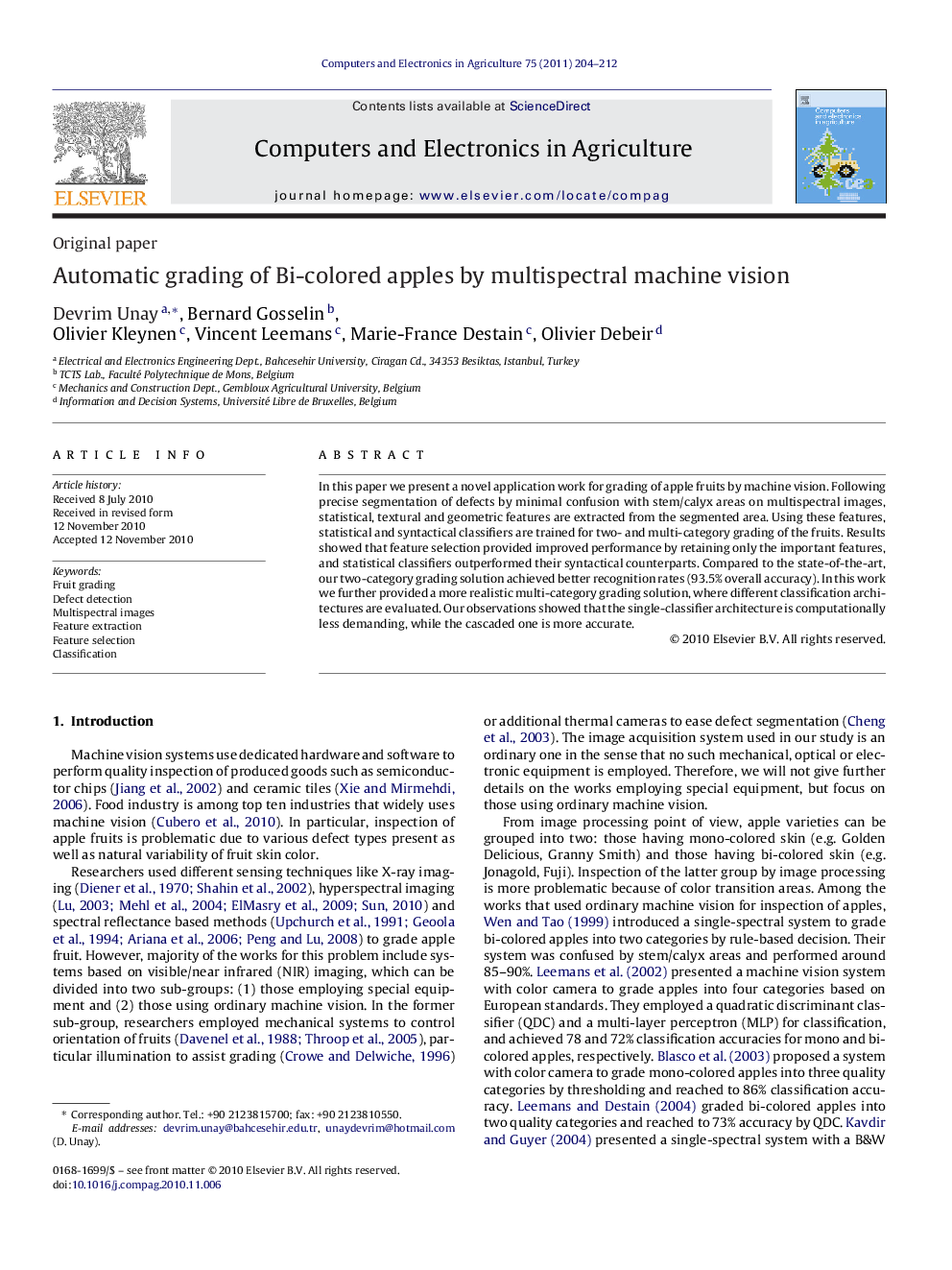| Article ID | Journal | Published Year | Pages | File Type |
|---|---|---|---|---|
| 84839 | Computers and Electronics in Agriculture | 2011 | 9 Pages |
In this paper we present a novel application work for grading of apple fruits by machine vision. Following precise segmentation of defects by minimal confusion with stem/calyx areas on multispectral images, statistical, textural and geometric features are extracted from the segmented area. Using these features, statistical and syntactical classifiers are trained for two- and multi-category grading of the fruits. Results showed that feature selection provided improved performance by retaining only the important features, and statistical classifiers outperformed their syntactical counterparts. Compared to the state-of-the-art, our two-category grading solution achieved better recognition rates (93.5% overall accuracy). In this work we further provided a more realistic multi-category grading solution, where different classification architectures are evaluated. Our observations showed that the single-classifier architecture is computationally less demanding, while the cascaded one is more accurate.
Research highlights▶ Automatic grading of bi-colored apple fruits by multispectral machine vision. ▶ Defective skin segmentation by pixel-wise classification, and statistical-textural-geometric features extraction. ▶ Automatic two- and multi-category grading using statistical and syntactical classifiers. ▶ Feature selection improves grading accuracy by finding a small optimal subset of features. ▶ This optimal feature subset consists mostly of statistical and textural features. ▶ Proposed two-category grading provides higher accuracy than literature. ▶ For multi-category grading single-classifier is computationally less demanding, whereas cascaded-classifiers system is more accurate.
